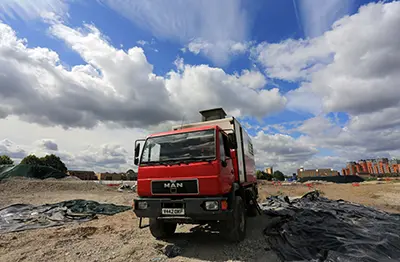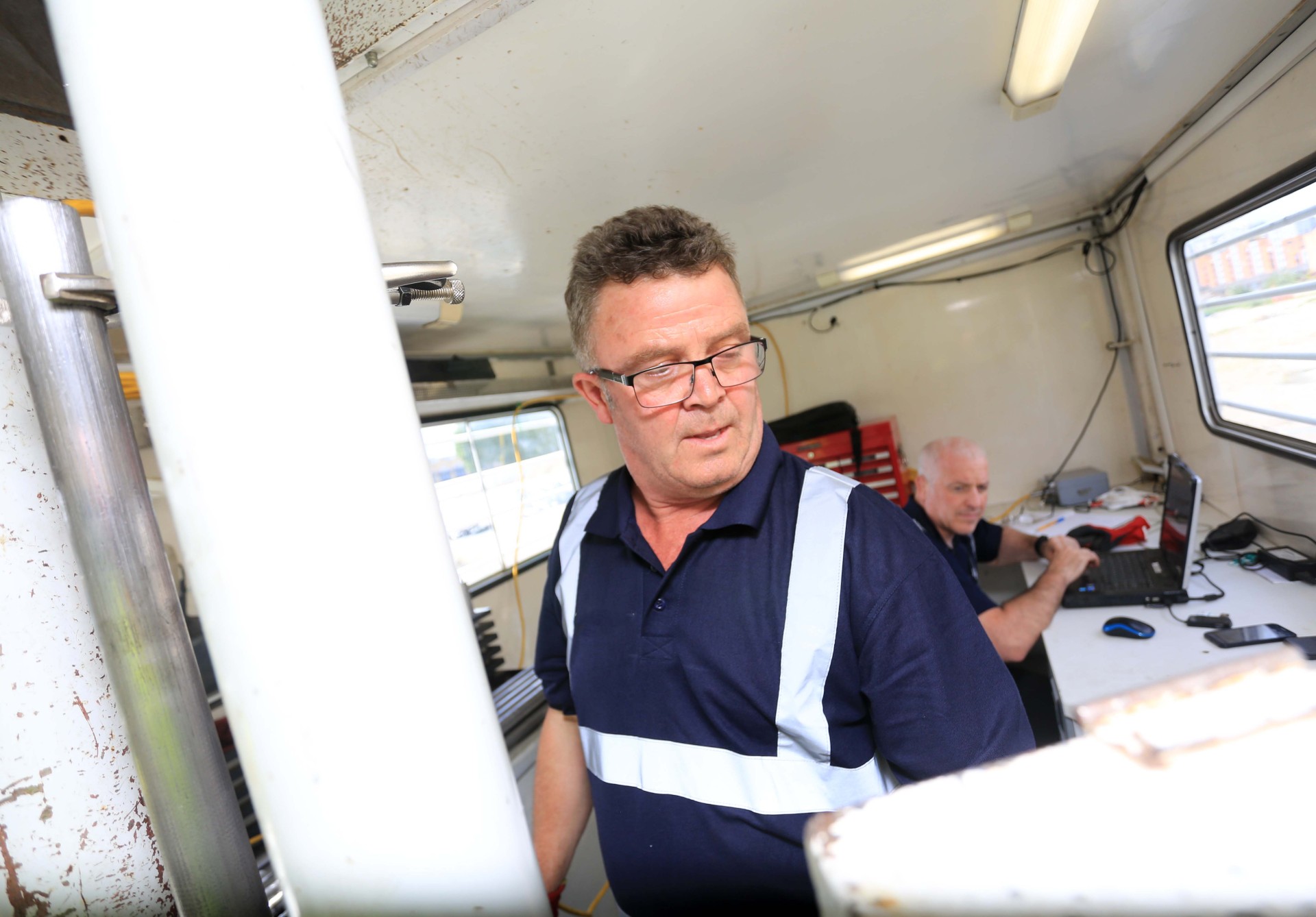UXO clearance for UK constructor
Igne was commissioned to provide unexploded ordnance clearance ahead of piling works for the construction of a large housing project in Enfield, London, UK.
UXO clearance for UK constructor:
Igne was commissioned to provide UXO clearance ahead of piling works for the construction of a large housing project in the South East of England.
There were nine construction phases which included plans for the development of blocks of flats up to nine storeys in height.
In very basic terms, the higher a construction is, the deeper its foundations need to be - and in this case it meant there was a need to survey to bomb penetration depth (BPD) to make sure there was no unexploded ordnance (UXO) on site.
Igne was invited to tender and its proposal was accepted.
Igne's approach to UXO clearance in the UK:
After carrying out an initial desktop risk assessment, the likelihood of encountering UXO on site was deemed high, and Igne therefore recommended intrusively surveying 426 positions to bomb penetration depth.
The purpose of these intrusive surveys was to identify any discrete ferrous objects and to ensure the ground was clear of UXO before construction began.
Two intrusive survey methods were utilised to complete the works in the most efficient manner possible:
The BXP intrusive survey method:
Intrusive surveys are normally undertaken using magnetometers. These are either pushed into the ground using hydraulic rams; at Igne this survey method is called BXP.
The TFG intrusive survey method:
Alternatively, magnetometers are lowered into non-ferrous tubes inserted into boreholes formed using a rotary drill or other hole forming method. This method is called TFG at Igne.
The data collected each day was processed within 24 hours, and interim clearance drawings were issued to the client daily to support their project planning.
Most masses that were modelled from the survey data collected were able to be discounted as items of potential UXO (pUXO) through additional surveys - or via the identification of geological/artificial trends across the site.
However, one mass modelling 50kg at a 5m depth matched the criteria of an item of UXO.
Is it a bomb?
Igne carried out an additional three surveys at this location to triangulate the item's position. These surveys confirmed the presence of a discrete ferrous item - a potential bomb.
Igne geo experts calculated the exact position of the object and its location was excavated to 5m under the supervision of Igne's explosive ordnance disposal (EOD) engineers.
After the removal of the item and its safe disposal, the site was handed back to the construction client cleared of UXO and ready for the piling works to commence.
Final clearance documentation was provided to the client.
People also ask:
What is UXO clearance?
The clearance of unexploded ordnance, or UXO, refers to the safe removal or destruction in situ of explosive remnants of war. These may be bombs, munitions, improvised explosive devices or simply bullets or grenades. The clearance method will depend on many factors such as the item, its location and stability or otherwise.
What are buried bombs called?
The catch all term unexploded ordnance or UXO applies to any explosive item whether it is buried or not. The acronym UXB may also be used specifically for unexploded bombs that may be buried.
What does UXO stand for?
UXO stands for unexploded ordnance and refers to any item - be it a bomb, a bullet, a grenade or a mine.
Does my site need a UXO clearance survey?
According to CIRIA 681, which details the risk management process for constructors when considering unexploded ordnance, to demonstrate adherence to CDM Regulations 2015, the Health & Safety at Work Act and your duty of care responsibilities, you should have at least a desktop risk assessment conducted.
This is the first stage of a UXO clearance survey. Depending on the risk level identified by your desktop survey, you may then need further UXO clearance surveys such as a non-intrusive or intrusive survey.
Other articles of interest

UXO disposal for construction company in Scotland
Igne developed and implemented a comprehensive unexploded ordnance (UXO) risk mitigation strategy for a development project on a former RAF site.

How Igne battled birds and bombs in the Orkney Islands
In 2020, Igne's UK land team took on an atypical project in the Orkney Islands. While the services provided were normal (UXO risk mitigation ), some extra requirements brought a fresh challenge.


